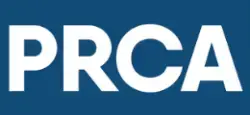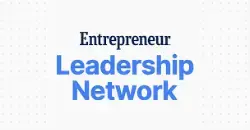Welcome to the world of press releases, where crafting a standout announcement can mean the difference between landing major media coverage or getting lost in the shuffle. Whether you’re a public relations veteran or new to the game, understanding the nuances of writing an effective press release is crucial. Here’s your comprehensive guide to writing press releases that capture attention and leverage media coverage like a pro.
Is Your Announcement Newsworthy?
First things first, before you begin crafting a news release, you must decide if the announcement is even newsworthy. Some important things to ask yourself:
- Timeliness
Is the story occurring currently or linked to an upcoming event? - Impact
How many people are affected by the story, and what are the consequences? - Prominence
Does the story involve notable people, organizations or brands? - Human Interest
Does the story have emotional appeal or spark curiosity? - Unique
Does the story offer something different, unusual, or unexpected? - Data
Can data help explain the significance of the story, determine the best time to share it, or highlight trends that warrant attention?
RELATED: Newsroom Leaders Discuss State of the Media in 2024
Ten Steps to Crafting a News Release
- Nail the Headline
Your headline is the hook. It’s the very first thing journalists and readers will see, so make it punchy and engaging. Think of it like a tweet: brief, compelling, and to the point. Avoid jargon and get straight to the heart of the news.
Example: Instead of “Innovative Tech Company Announces New Product Line,” try “Tech Startup Revolutionizes Industry with Cutting-Edge Gadget.” - Craft a Killer Lead
The opening paragraph is your chance to grab attention. Summarize the who, what, when, where, why and how. If the lead isn’t compelling, the rest of the press release might not even get read.
Example: “In a groundbreaking move for the tech industry, XYZ Corp is unveiling its latest product, the SuperGadget, at TechCon 2024 in San Francisco this Friday. This revolutionary device promises to redefine how we interact with technology.” - Provide Valuable Details
After your engaging lead, dive into the specifics. This is where you provide the juicy details—who’s involved, what’s being launched and why it matters. Include quotes from key players to add credibility and a human touch.
Example: “According to Jane Doe, CEO of XYZ Corp, ‘The SuperGadget is more than just a new product; it’s a leap forward in technology that will enhance everyday life in ways previously thought impossible.'" - Use Quotes Wisely
Quotes add authenticity and personality. They should come from someone with authority or direct involvement in the news. Make sure quotes are relevant and add value to the story.
Example: “John Smith, Lead Developer, added, ‘We’ve spent years perfecting this technology. It’s incredibly exciting to see it finally come to life.’” - Add Multimedia
Including images, videos or infographics can make your press release more engaging and shareable. Journalists love multimedia because it makes their job easier and their stories more visually appealing.
Pro-Tip: Sometimes large attachments get caught up in journalists’ email filters. Instead, try putting all of your multimedia content into a dropbox or Google Drive link with a list of what journalists will find in that link. Paste your most compelling image int he body of the email so they don’t have to work hard to see the visuals.
Related: How to be a Journalist’s Best Friend - Include a Call to Action
Don’t forget a clear call to action. Whether it’s directing readers to a website for more information, inviting them to an event, or encouraging them to get in touch, make it easy for them to take the next step.
Example: “For more information on the SuperGadget and to see it in action, visit our website at XYZ Corp or join us at TechCon 2024.” - Optimize for SEO
Even press releases need SEO! Include relevant keywords naturally, and ensure you have a strong, keyword-rich boilerplate about your company. This helps your press release get picked up by search engines and increases its visibility.
Example: If you’re announcing a tech product, use keywords like “innovative tech,” “cutting-edge gadget” and “technology breakthrough.” - Proofread, Proofread, Proofread
Before hitting send, make sure your press release is free of typos, grammatical errors and formatting issues. A polished press release reflects professionalism and attention to detail.
Pro-Tip: Always have someone else review your work. We are our own worst editors. - Distribute Strategically
Crafting a great press release is only part of the job. You also need to get it in front of the right people. Use a mix of media distribution services, social media and direct outreach to journalists and bloggers who cover your industry. The key here is to make sure you are pitching to *relevant* journalists whose audience wil benefit from your news. - Follow Up
After distribution, don’t be afraid to follow up with key journalists or media contacts. A polite nudge can help ensure your press release gets the attention it deserves.
Research from Muckrack and Cision agrees that journalists welcome one or two follow ups. But be sure to not badger.
Press releases are a powerful tool in the public relations arsenal, but only if done right. By following these best practices, you can boost your chances of getting noticed and making an impact. Ready to elevate your public relations strategy? Contact us for a free consultation or sign up for our emails and newsletters for more expert advice on how to make the most of your media relations. Let’s make your next announcement a headline grabber!
RELATED: What the C-Suite Needs to Know About the True Power of Earned Media

